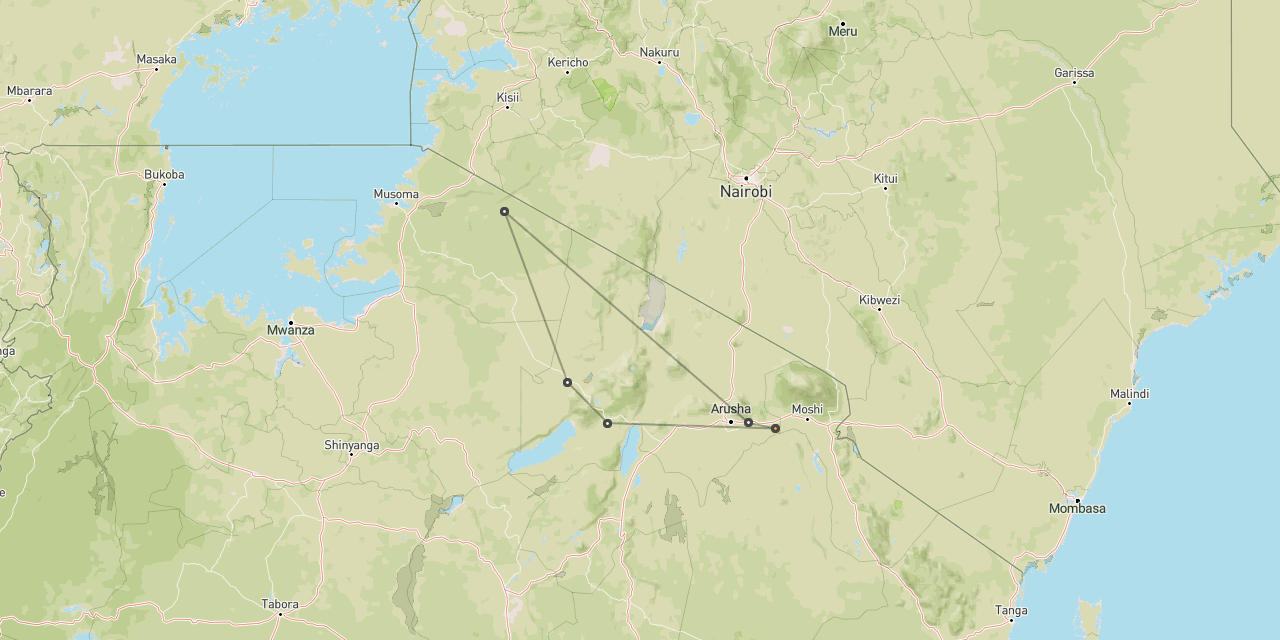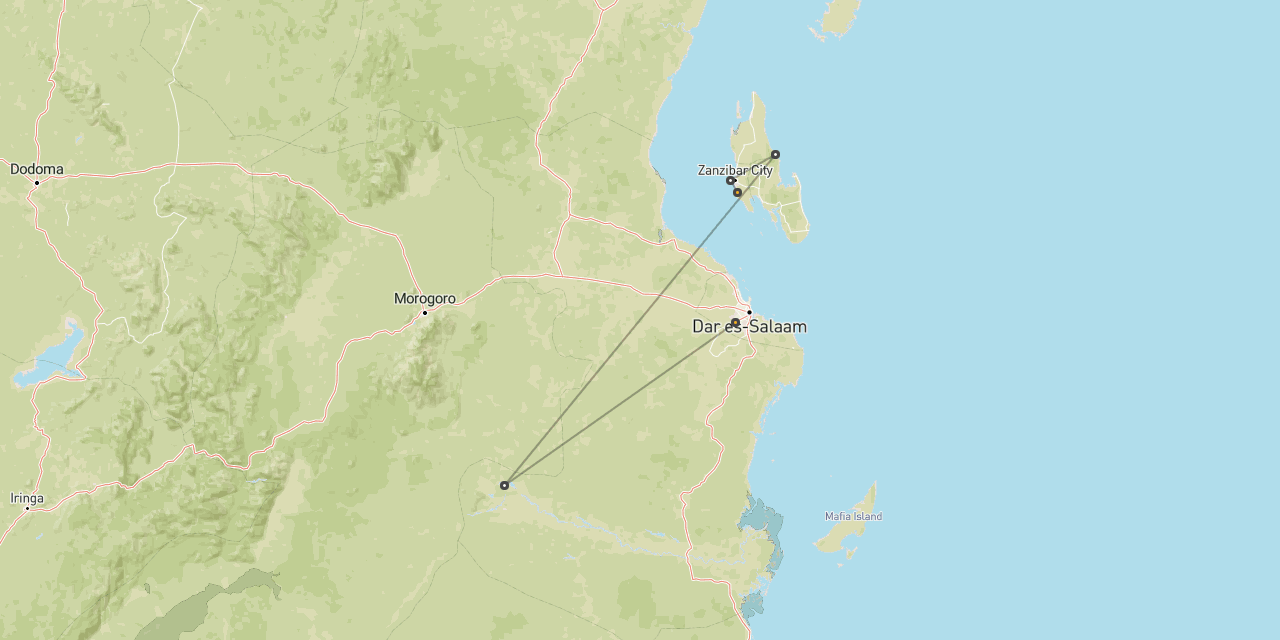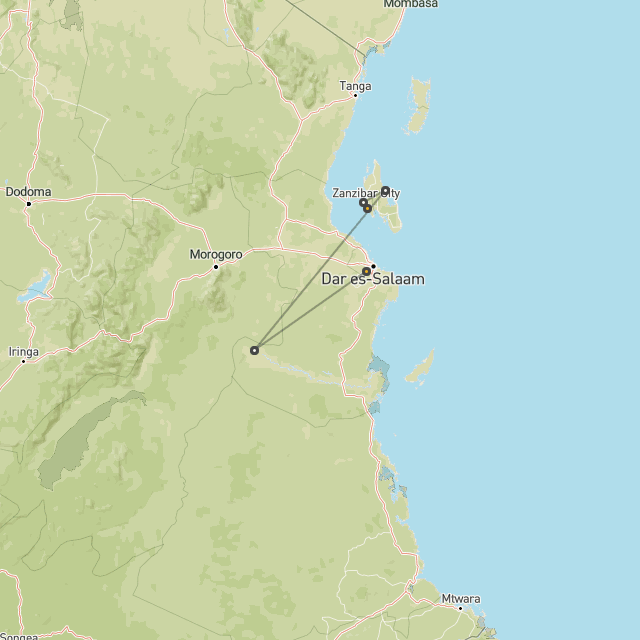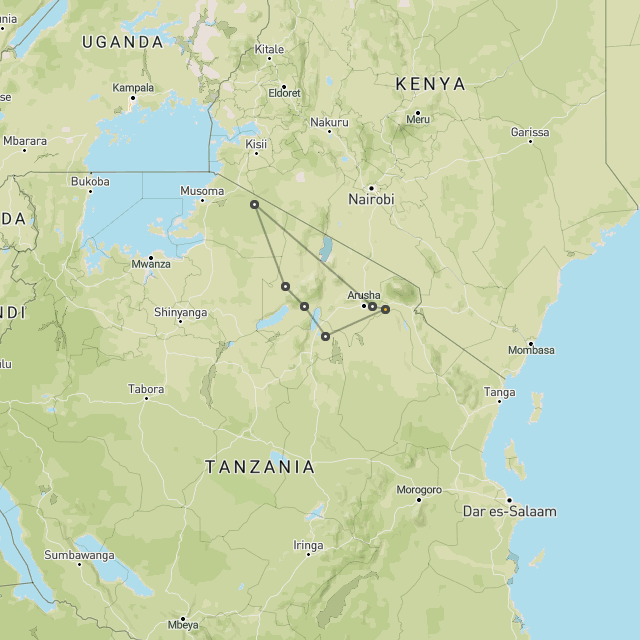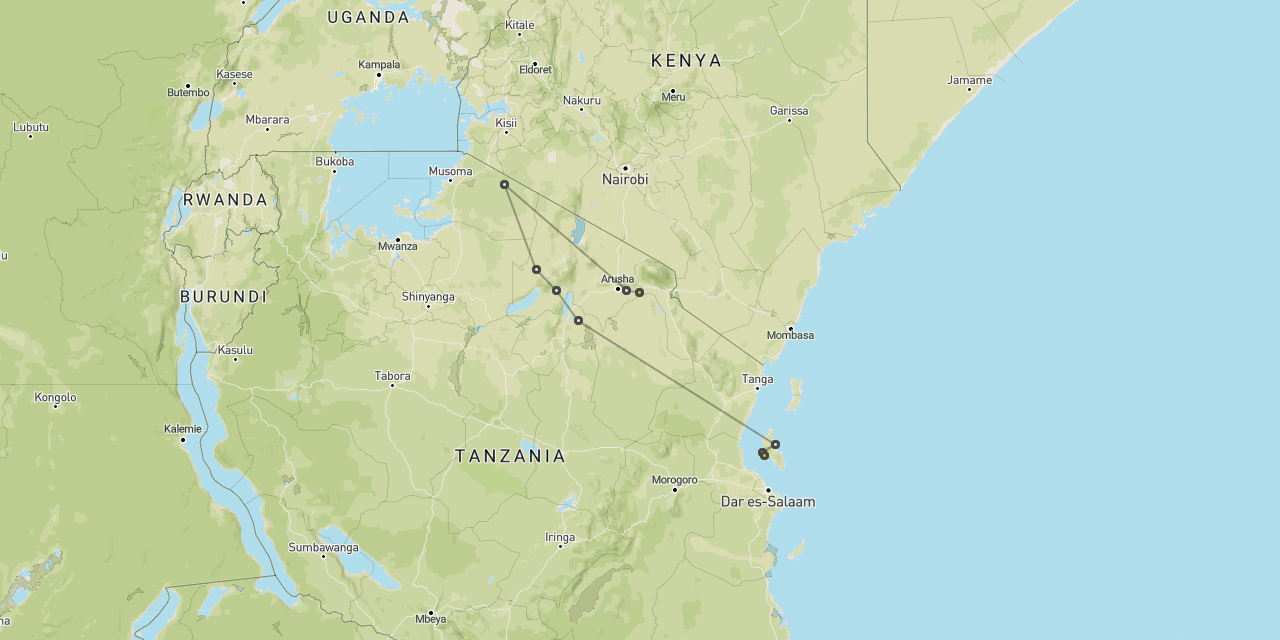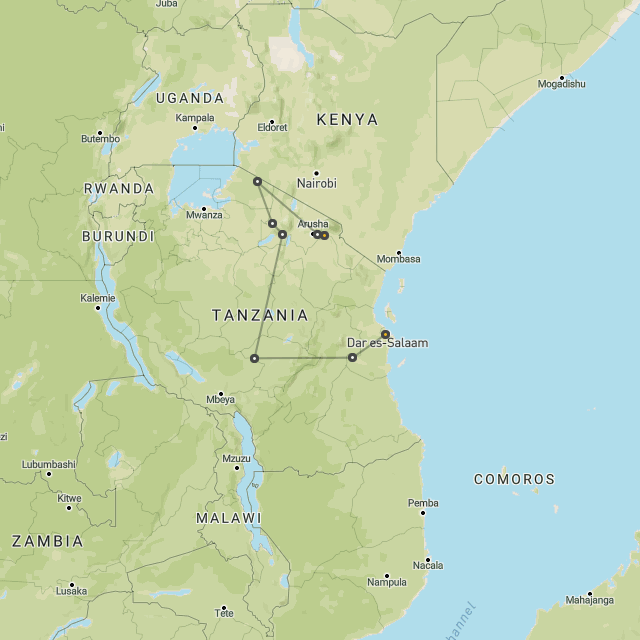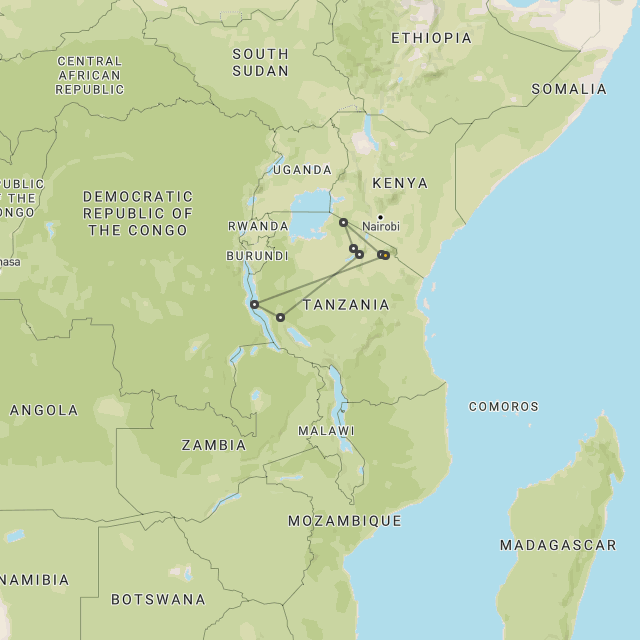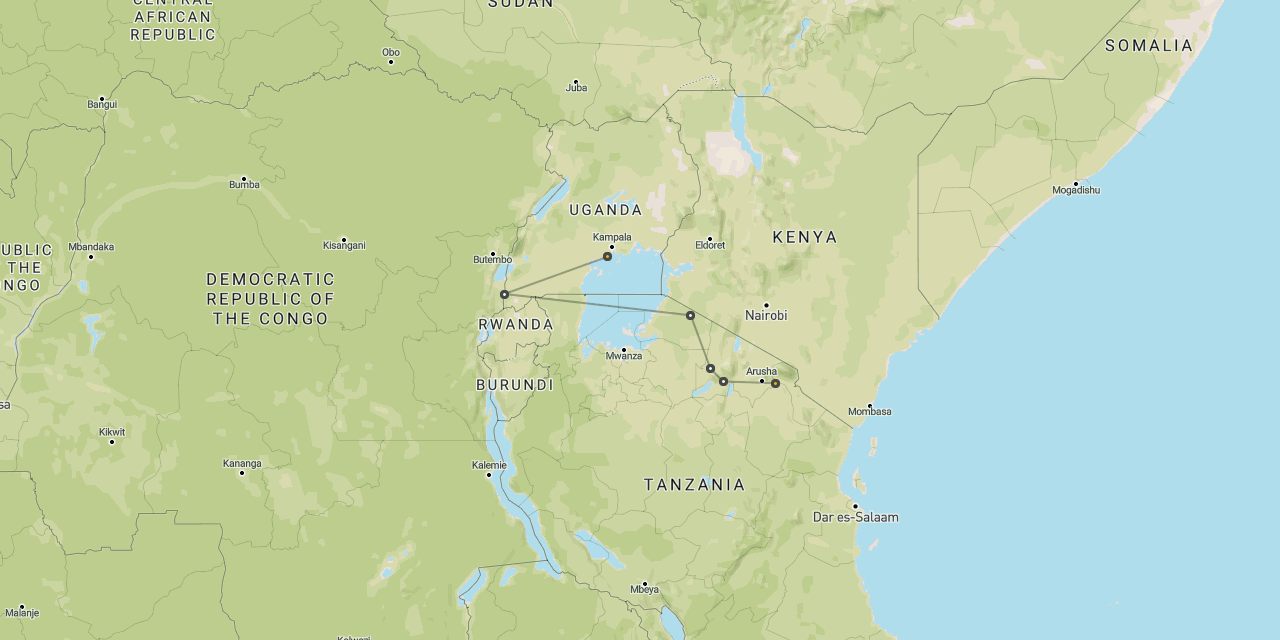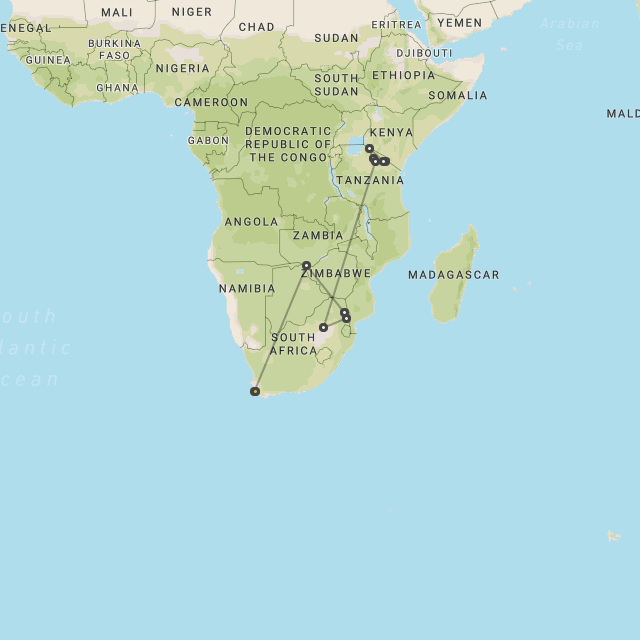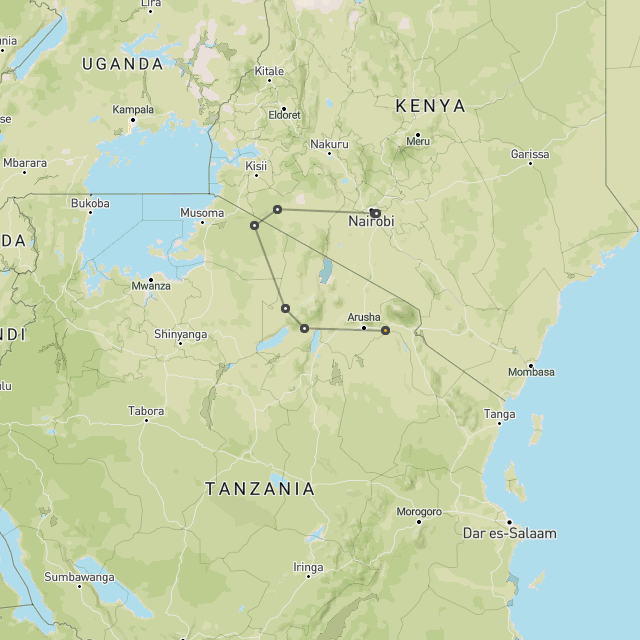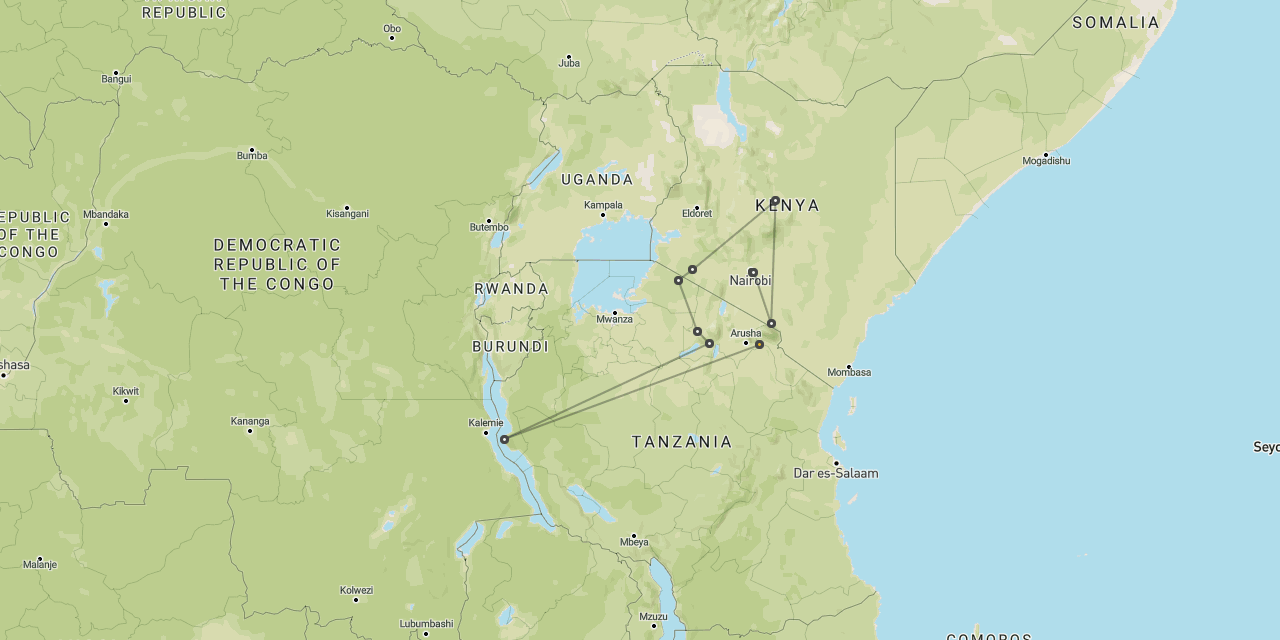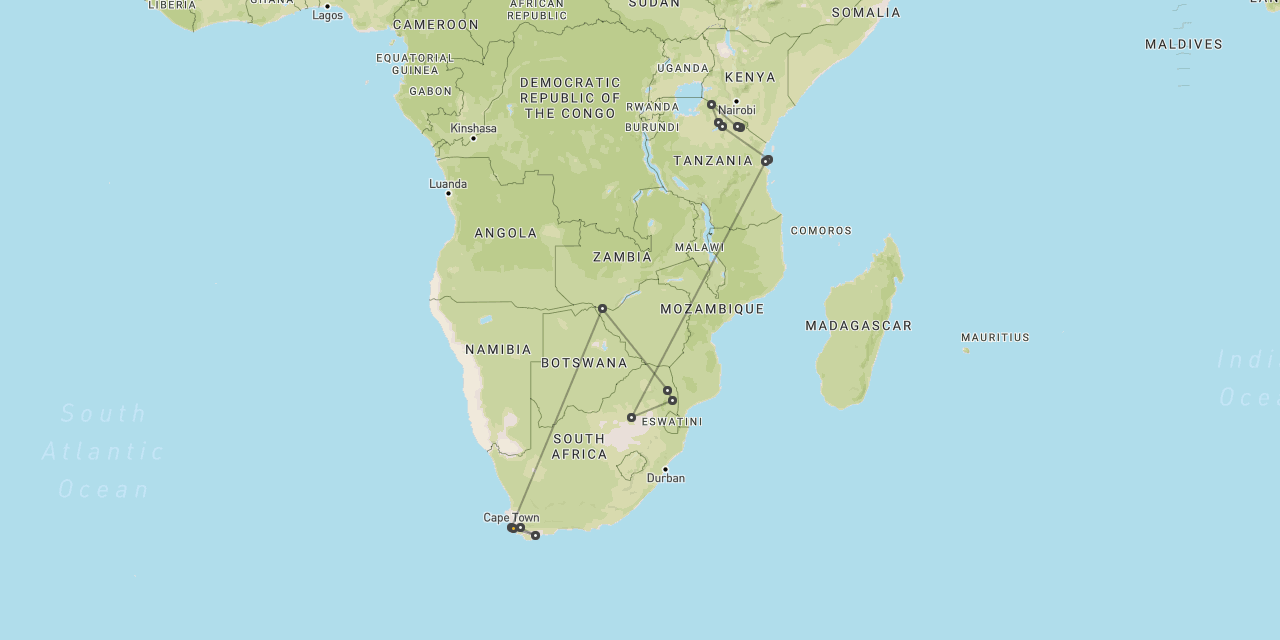
The history and geography of Selous
Selous
is a vast reserve
with prodigious wildlife

Key information …
The Selous area was first designated as a protected area in 1896 by the German colonial administration under Hermann von Wissmann and became a wildlife trophy hunting reserve in 1905.
The reserve was renamed after the legendary British soldier, big game hunter and pioneering conservationist Frederick Courtney Selous, who had stood alongside Cecil Rhodes during his campaign to annex Zimbabwe for the British Empire and who also achieved notoriety in 1899 for speaking out against the Anglo-Boer war in South Africa.
Selous hunted across Africa, notably in this particular area from around 1871, but towards the end of the nineteenth century his attention turned towards the conservation of wildlife rather than its continued extermination.
In 1916, on the outbreak of the First World War, the sixty year old Selous was made Captain of the 25th Royal Fusiliers, winning a DSO in 1916. With his detailed knowledge of the bush, Selous led the pursuit of a small German guerrilla force that was wreaking havoc throughout the Tanganyika Territory. On New Year’s Day 1917, Selous was shot dead by a sniper close to the banks of the Beho Beho River where his grave can be seen to this day.
In 1922 the British colonial administration extended the area under protection and renamed it the Selous Game Reserve in his honour.
In 1946 the reserve was further extended to its present size, when the government relocated a large number of resident people, officially to ‘rescue’ them from a sleeping sickness epidemic.
The reserve was designated a UNESCO World Heritage Site in 1982 due to its wildlife diversity and pristine undisturbed state.
We are presently anticipating that a large section of the north part of Selous will be separated from the game reserve and made into Nyerere National Park, which will be a very exciting development and should help greatly with local conservation efforts.
a First World War battleground

At 54,600 square kilometres, the Selous is actually larger than Switzerland, four times the size of the Serengeti National Park and three times the size of the massive Kruger National Park in South Africa. It forms a significant part of the enormous 150,000 square kilometre Selous-Niassa ecosystem, which crosses over into northern Mozambique and is the largest tract of wild bush in Africa.
Selous is the only major game reserve in East Africa to be located down on the humid coastal plateau, which creates an unusually languid and tropical atmosphere.
The reserve is extremely scenic in parts, centred on the Great Rufiji River, which meanders through a network of oxbow lakes and channels.
The land is largely flat, with distant hills to give perspective and includes a wide range of different vegetation zones, notably acacia, miombo and palm forests, marshlands and broad open grasslands.
A very large and controversial new dam is presently under construction inside the reserve and is expected to flood around 1.8% of this vast reserve.
an absolutely vast conservation area

The Selous is renowned for its prodigious wildlife numbers, with an estimated 120,000 buffaloes, 100,000 wildebeest, 35,000 plains zebras, 40,000 hippos and 4,000 lions.
Other major species include elephants, black rhinos, Maasai giraffes, greater kudus, waterbucks, bushbucks, Lichtenstein’s hartebeest, elands, sables, African wild dogs, spotted hyenas, leopards and Nile crocodiles.
Of the predators, lions are the most commonly seen, leopards and wild-dogs dogs being much more occasional sightings.
During the Jun-Oct dry season you should see a broader range of major species than most other reserves in East Africa, although not in the quantities and concentrations of somewhere like the Serengeti.
Birds
The Selous Game Reserve contains more than 440 recorded species of birds.
Highlights include pink-backed pelicans, African skimmers, giant kingfishers, carmine bee-eaters, white-fronted bee-eaters, African fish eagles, palm nut vultures, ibises, palm swifts, yellow-billed storks, white-crowned plovers, spur-winged plovers, pied kingfishers, malachite kingfishers, trumpeter hornbills, purple-crested turacos, egrets, herons, Malagasy squacco herons and Pel’s fishing owls.
reportedly prodigious, but surprisingly elusive wildlife

Up to 2022, the Selous Game Reserve remained mainly a trophy hunting area, with only five percent of the land area being dedicated to photographic tourism.
The reserve has experienced the terrible negative effects of hunting, including the repeated removal of the largest and healthiest animals and negligent land stewardship by rogue operators.
On top of this problem is the horrific poaching situation, mainly in relation to elephants.
In 1976 the Selous Game Reserve was cited to contain 109,000 elephants. By 2009 numbers had dropped to 20,000 and by 2013 estimates sat around 13,000. Sources blame corrupt politicians, officials, businessmen and local villagers, who help to connect poachers with illegal ivory markets in the Far East.
In 2018 we received reports from friends in the Selous that the dire situation seemed to be turning around, with far fewer dead elephants being found and the distant sound of gunfire being a much less frequent event. The general feeling is that the political landscape may have shifted sufficiently to make poaching a great deal more difficult.
the poaching epidemic appears to be abating

The main activity in Selous is day time vehicle safaris, which are usually done as morning and afternoon excursions.
Some lodges also offer full day safaris and we certainly feel that the park is varied and interesting enough to want to explore further afield rather than simply stick to the patch around your camp.
Unusually for Tanzania, off-road driving is permitted, so it’s much easier to make the most of important sightings.
A real highlight in Selous is the motorboat safari. This may not be the only reserve in East Africa to offer this kind of river safari, but it’s certainly the best.
As well as the obvious opportunity to view hippos and crocodiles, encounters with elephants along the riverbank are not unusual and the birding can be excellent. Some camps are able to head upstream to Steigler’s Gorge, an atmospheric spot where the river becomes hemmed in by forested hillsides.
Safari operators in Selous are also permitted to offer walking safari, which represents a very pleasant change of pace and a chance to make a rather more intimate connection with the landscape.
Most camps do their walking early in the morning, before the heat of the day has risen, sometimes ending up with a bush breakfast in a remote location before continuing on by vehicle.
However this walking safari rarely includes deliberate approaches onto potentially dangerous animals like elephants and lions, for that you need to head for the nearby Ruaha, or head off to Zimbabwe or Zambia.
Some lodges also offer overnight bivouac camping in remote locations, for guests who want a slightly more intimate and potentially exciting bush experience.
Incidentally most people around here refer to this activity as ‘fly-camping’, which refers to the old days when hunters would go out and camp in ‘fly country’, referring to the tsetse flies that previously infested these wildlife areas and protected them from human settlement.
safari by vehicle, motorboat and on foot

Although Selous leads out with all these wonderful statistics about its size and animal numbers, in reality the core wildlife viewing area is relatively small, concentrating on a sector along the north bank of the Rufiji River which represents only around 3% of the total area. This is partly due to it being a particular sweet spot for wildlife, but is also due to the fact that the majority of the reserve is used for hunting. This is gradually changing, as the demand for photographic safari overtakes that for hunting safari, but progress is frustratingly slow.
The main consequence of this squeeze is that there can be significant vehicle clustering in core areas, which is rather ironic given the size of the place. The situation is exacerbated by the rash of poor quality lodges which has sprung up outside the main park gates. In high season a small fleet of vehicles spills into the reserve from these entry points. It’s not so much the volume of vehicles that is the problem, but the fact that they are so tightly clustered and the road network is not well set up to disperse them. However there are camps deeper inside the park where you really can feel the majesty and isolation of this wonderful reserve.
Perhaps the greatest disappointment in the Selous is the famously poor standard of safari guiding. We have encountered this in lodges of all levels. The biggest problem is a general lack of enthusiasm and an unwillingness to push the envelope. Vehicle safari can, on occasion, feel rather perfunctory, like the guides are just going through the motions. There also seems to be a general resistance to doing full day vehicle safaris in most lodges, which we think are essential to gaining a proper feel for the place. We’re not saying that there aren’t good guides in the Selous, but in our experience they tend to be the exception rather than the rule. We have been assured by some of the best lodges that a lot of work has gone into improving the guiding, so we hope to be able to confirm this in the near future.
Because 95% of the reserve is dedicated to hunting, the animals, which cross unknowingly from one area to the next, are naturally more skittish. When a buck high-tails at 300 metres you can be sure it’s grown up in an environment where high-powered rifles are in common use. Fortunately a lot of animals have figured out it’s best to stick to the photographic areas, where they have learned to be more relaxed around vehicles.
Poaching is also a major and increasing problem in the Selous, most notably of elephants, which are being slaughtered here in frightening numbers, as described in the section on Conservation.
historically poor management of the reserve

let us know your thoughts about Tanzania
and we will help you create the perfect trip

Further reading
Extraordinary tailor-made adventures,
from earthy and edgy to easy and extravagant
From around USD 2500 per person, you set the ceiling
Sample Trips
Here are some of our popular trip shapes

Get started on your trip
It’s never too soon to get in touch, we are here to help with every stage of your planning.
Best Lodges
We regularly inspect and photograph all of the the best lodges, to ensure that we always recommend the most suitable options
Key Locations
Take a look around related locations. Click ‘View more’ to explore locations further afield.
